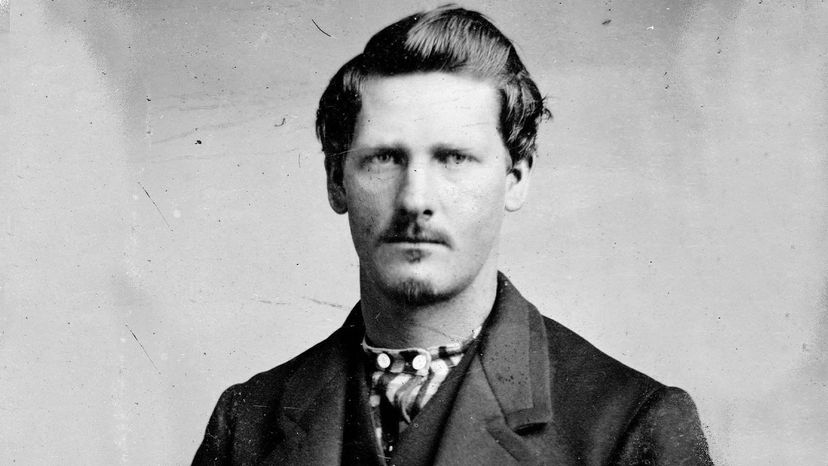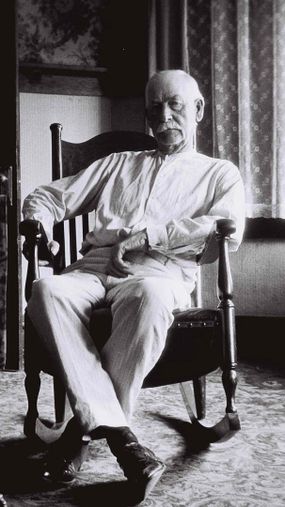
Advertisement

Advertisement
Wyatt Earp was a lawman, a gambler, a lover of prostitutes, a buffalo hunter, a saloon keeper, a miner, a boxing referee, maybe a bordello keeper and, most famously, a gunslinger of international renown.
But the absolute, without-a-doubt, hands-down, fastest gun in the West? Probably not. Though, in the end that doesn't register a smudge on Earp's reputation as the quintessential American gunfighter.
Advertisement
"His draw was only fairly fast," Earp's assistant, Arthur King, told True West magazine in 1959, relayed in "Wyatt Earp's Cow-boy Campaign," by Chuck Hornung, "but his accuracy was uncanny."
Earp, as any Wild West buff knows, was in the center of the most famous street fight in American history. That 30-second throwdown, which came to be known as the Gunfight at the O.K. Corral (though it wasn't really in a corral at all), cemented Earp's reputation as a quick and deadly draw.
Advertisement
A little closer look, though, reveals that Earp — who never was wounded in a gunfight and died at age 80 of natural causes — maybe wasn't that fast. And it really didn't matter.
Advertisement
The well-worn picture we have of a Wild West gunfight — a tension-filled standoff in the middle of a dusty street, often at high noon, won invariably by the man who unholsters his gun more quickly than his opponent — is largely fiction. It's Hollywood. It's "High Noon." It's "Gunfight at the O.K. Corral."
Gunfights happened, for sure. But they were just as apt to be like the O.K. Corral, with a bunch of men unloading at each other all at once, than a mano-a-mano showdown in the middle of town.
Advertisement
And in a close-range free-for-all, speed is not all it's cracked up to be.
"Anything that has created this myth of the fast draw is a byproduct of entertainment," says Jim Dunham, the director of special projects and historian at the Booth Western Art Museum in Cartersville, Georgia. "Having said that, there was this sense of a reputation of dangerous men with a gun. But they would not have understood if you'd have said, 'Who's fastest with a gun?'
"When it comes to gunfights, the idea is to stay alive, not necessarily draw fast. In fact, the faster draw generally misses, and therefore gets killed."
Advertisement
Earp's fellow lawman and general Old West badass Bat Masterson once said that speed in a gunfight is probably the least important factor in winning. Even accuracy is low on the list.
Tops, Masterson said, is a steely will and the ability to use that to your advantage.
Advertisement
"He called it deliberation," says Dunham, who also serves as president of the Wild West History Association. "What I say is it's the ability to make good decisions under stress. And you don't get much more stress than when somebody's shooting at you."
Earp, as historians long have recognized, possessed an almost preternatural coolness under fire. "He is a man who never smiled or laughed. He was at the time the most fearless man I ever saw, and Satan and all his imps could not scare Wyatt Earp," Richard Codgell, a Wichita clerk, wrote in his memoirs, as detailed in Hornung's book.
"Wyatt Earp," Masterson wrote in his later career as a journalist, "is one of the few men I personally knew in the West in the early days, whom I regard as absolutely destitute of physical fear."
Advertisement

Nothing proved Earp's mettle more than the tumultuous gunfight near the O.K. Corral in Tombstone, Arizona, on Oct. 26, 1881. And on that day, Earp was not the fastest gunslinger in town.
That afternoon, Earp, his brothers Virgil and Morgan, and Wyatt's friend John Henry "Doc" Holliday faced off against a rowdy group of outlaws known as the Cowboys; Billy Claiborne, brothers Ike and Billy Clanton, and brother Frank and Tom McLaury.
The Earps weren't really expecting a gunfight. They had ordered the Cowboys to give up their guns earlier in the day, warning them with a pistol-whipping at the hands of Wyatt. So when they went to arrest the Cowboys at about 3 p.m., they expected the Cowboys to be unarmed.
They weren't. And that's when Wyatt Earp stepped into Western lore.
"His mind calculated — he was kind of like a quarterback when the defense moves on you, and you have to calculate, 'What's my backup plan, here?' — and not everybody really can do that, especially when there's live rounds coming at you," says Marshall Trimble, Arizona's official state historian.
While Earp was doing his split-second assessing, young Billy Clanton — he was only 18 or 19 at the time — saw what he thought was an opening and took his shot.
"Wyatt thought, 'I better take Frank [McLaury], because he's more dangerous. He's older, and he's probably not going to rush his shot,'" Trimble says. "In the meantime, Billy Clanton gets off the first shot ... and Frank gets shot in the belly. He's a dead man walking. But Billy rushes his shot and misses."
In the end — the fight lasted only 30 seconds or so, with at least 20 shots being fired — Billy Clanton and both McLaury brothers died. Virgil, Morgan and Holliday were wounded but recovered.
And Wyatt Earp, though he wasn't the fastest gun in the fight, came out without a scratch.
Advertisement
Please copy/paste the following text to properly cite this HowStuffWorks.com article:
Advertisement